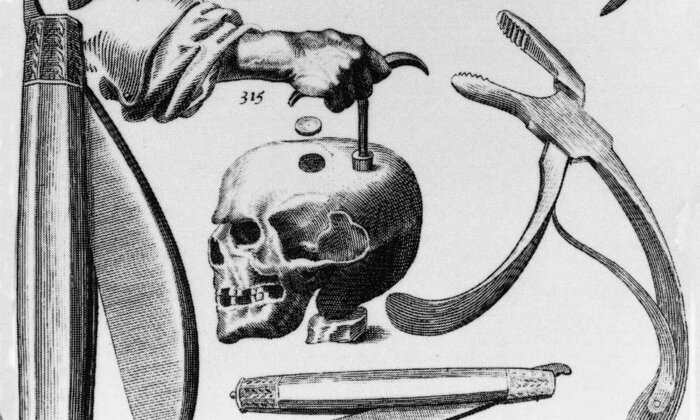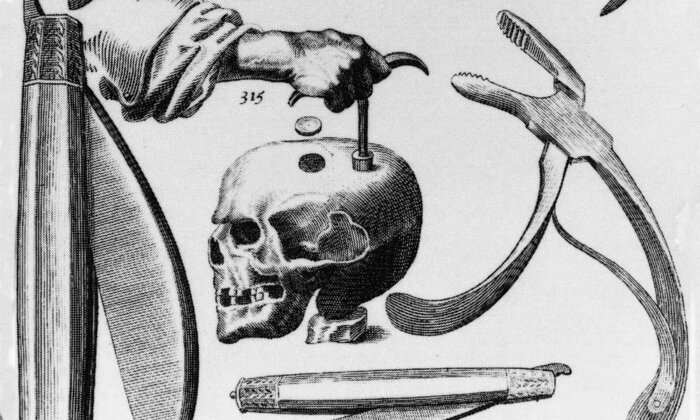
For many centuries, trepanning — the act of boring holes into the skull — has been used with the goal of healing the injured, increasing one’s spiritual enlightenment, or advancing the patient’s social awareness.
Instruments of Trepanning
A number of mechanisms have been employed in the practice of trepanning. In prehistoric times, a stone chisel was repeatedly hammered into the head until the skullcap was penetrated. Throughout the Mesa-Americas, areas abrasive substances were grounded at the back of the patient’s head to expose the brain’s chamber.
Beginning around the Bronze Age, augers or other drilling type devices expiated breaching the skull area.
Medical Theory of Trepanning
In the past, medical utilization of trepanning was intended to alleviate the ailments of patient diagnosed with epilepsy, people believed to have a mental health issues, or those suffering a traumatic cranial injury.
Surgeons believed that boring a hole in a patient’s head would increase the brain’s metabolism, heighten cranial blood flow, or release evil entities which resided with the skull. All of these procedures were administered without anesthetic. Astoundingly, there are dozens of documented cases of patient’s surviving operations and living otherwise full, uninterrupted lives.
Spirituality Theory for Trepanning
Those individuals who were trepanned for spiritual reasons report experiencing a new and glorious understanding of themselves and the world around them. They believed that once the brain is opened, it introduces oxygen which provides uplifted knowledge of the significance of divinity.
In addition, this so-called “third eye” is said to bestow psychic abilities upon the patient, who may also acquire a new understanding of mysticism. Moreover, some reported that the body’s senses were heightened.
During the Middle Ages, the familiar hair cut of monks and friars (bald on the top head with a ring of hair around the middle of the head) evolved from the holy men who had top of their heads shaved in preparation for a trepanning procedure.
Trepanning as a Method of Social Illumination
In more modern times, people underwent trepanning as a form of cultural clarification. Freshly-educated individuals sought trepanning, with the belief that the operation would heighten self-awareness and strengthen inner peace. They claim a universal understanding of man’s role within the natural world. Their freed brains allow them to think deeper, fully concentrate, and learn faster.
One new age actor named Amanda Feilding allowed her trepanning procedure to be recorded on video. In a movie short titled, “A Hole in the Head,” Amanda revealed her “third eye” while using a common household cordless drill. She completed her operation in her bathroom’s mirror as the videographer filmed. She announced experiencing only a slight discomfort; she claimed to experience great benefits in terms of her consciousness. Shortly the trepanning, her self-inflicted wound had completely healed, but she claimed that her level of social awareness continued to expand exponentially without boundaries.
Today, in many third world countries shamans and physicians continue to practice the art of treating aliments through the trepanning process. In medically modern societies trepanning is nearly forgotten except for the occasional operation to remove debris from the brain’s surface. However, the commonly repeated phrase, "I need that (some undesirable item) like I need a hole in the head," may be a ghost of of yesterday’s trepanning procedures.




